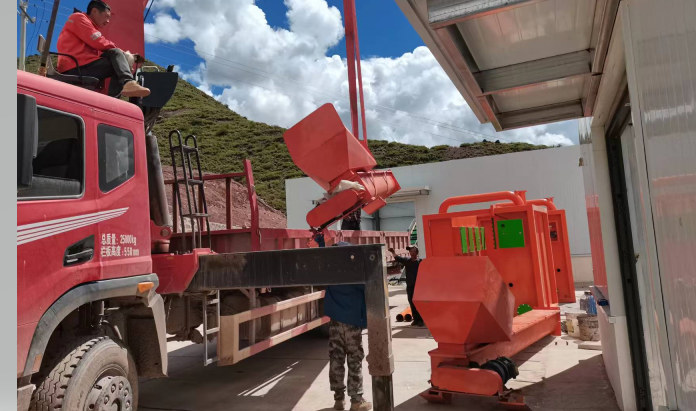What is a solid waste incinerator?
Solid waste incinerator is a kind of equipment specially used for treating solid waste. It converts solid waste into harmless substances through high-temperature incineration, and can recycle the generated heat energy.
The following is a detailed introduction from multiple aspects:
Working principle
Solid waste incinerator uses high-temperature oxidation reaction to fully react the organic matter in solid waste with oxygen in the air. Under the appropriate temperature (usually 850℃ - 1200℃) and sufficient air supply conditions, the combustible components in the solid waste are burned, releasing heat, and finally the solid waste is converted into ash, flue gas and heat.
Main types
Grate furnace: This is a more common type. The solid waste is placed on the grate, and the grate will perform different forms of movement (such as reciprocating, rolling, etc.), so that the solid waste can be continuously rolled and stirred during the combustion process, fully contacted with the air, and achieve a good combustion effect. This type is suitable for treating various types of solid waste, including urban domestic waste.
Fluidized bed incinerator: There are a large number of inert particles (such as quartz sand, etc.) in the furnace, and these particles are fluidized by the high-speed airflow sent from the bottom. After the solid waste enters the furnace, it is fully mixed with the fluidized particles and burns rapidly under high temperature and strong turbulence. Fluidized bed incinerators have the advantages of high combustion efficiency, large processing capacity, and strong adaptability to waste. They are especially suitable for treating some solid wastes with low calorific value and complex composition.
Rotary kiln incinerator: A rotatable horizontal cylinder is used as the main combustion chamber. Solid waste enters from one end and moves slowly and gradually burns in the kiln as the cylinder rotates. The rotary kiln incinerator can adapt to the treatment of a variety of solid wastes, and has a good treatment effect on some wastes with irregular shapes that are difficult to burn evenly in other furnace types. It is often used to treat industrial solid wastes, hazardous wastes, etc.
Structural composition
Combustion chamber: This is the core part of the incinerator, where solid waste undergoes combustion reaction. The combustion chamber needs to have good high temperature resistance and reasonable structural design to ensure that the combustion process is stable and efficient.
Feeding system: Responsible for feeding solid waste into the incinerator evenly and stably. The feeding system should be designed according to the type and processing capacity of the incinerator to ensure that the feeding rate matches the combustion rate.
Air supply system: Provides necessary oxygen for the combustion process. Reasonable air supply mode and supply amount are essential to ensure sufficient combustion and control the generation of pollutants. Air usually enters the incinerator through different tuyere to achieve good mixing with solid waste.
Waste heat recovery system: Utilize the heat of high-temperature flue gas generated by incineration, and convert the heat into steam or hot water through waste heat boiler and other equipment for power generation, heating, etc., to improve energy utilization efficiency.
Flue gas treatment system: Used to remove various pollutants generated during incineration, such as sulfur dioxide, nitrogen oxides, particulate matter, dioxins, etc. Common flue gas treatment technologies include desulfurization, denitrification, dust removal, activated carbon adsorption, etc., to ensure that the flue gas discharged meets environmental protection standards.
Ash treatment system: Responsible for collecting and treating slag and fly ash generated after incineration. Slag is generally discharged through the slag outlet, and can be comprehensively utilized or landfilled after cooling and other treatments; fly ash needs to be collected through a special collection device. Since it may contain harmful substances, it usually needs to be stabilized before proper disposal.
Function
Harmless treatment: Through high-temperature incineration, harmful microorganisms such as bacteria and viruses in solid waste can be effectively killed, toxic and harmful substances in it can be decomposed, and solid waste can be converted into relatively harmless ash and gas, reducing pollution to the environment and harm to human health.
Reduction: After incineration, the volume and weight of solid waste will be greatly reduced. Generally speaking, the volume of ash after incineration is only about 10% - 30% of the original solid waste volume, and the weight is also significantly reduced, which greatly reduces the pressure of subsequent disposal, such as reducing the occupation of landfill sites.
Resource utilization: A large amount of heat energy generated during incineration can be recycled and converted into electricity or heat energy for production and life, realizing partial resource utilization of solid waste and alleviating the problem of energy shortage to a certain extent.
